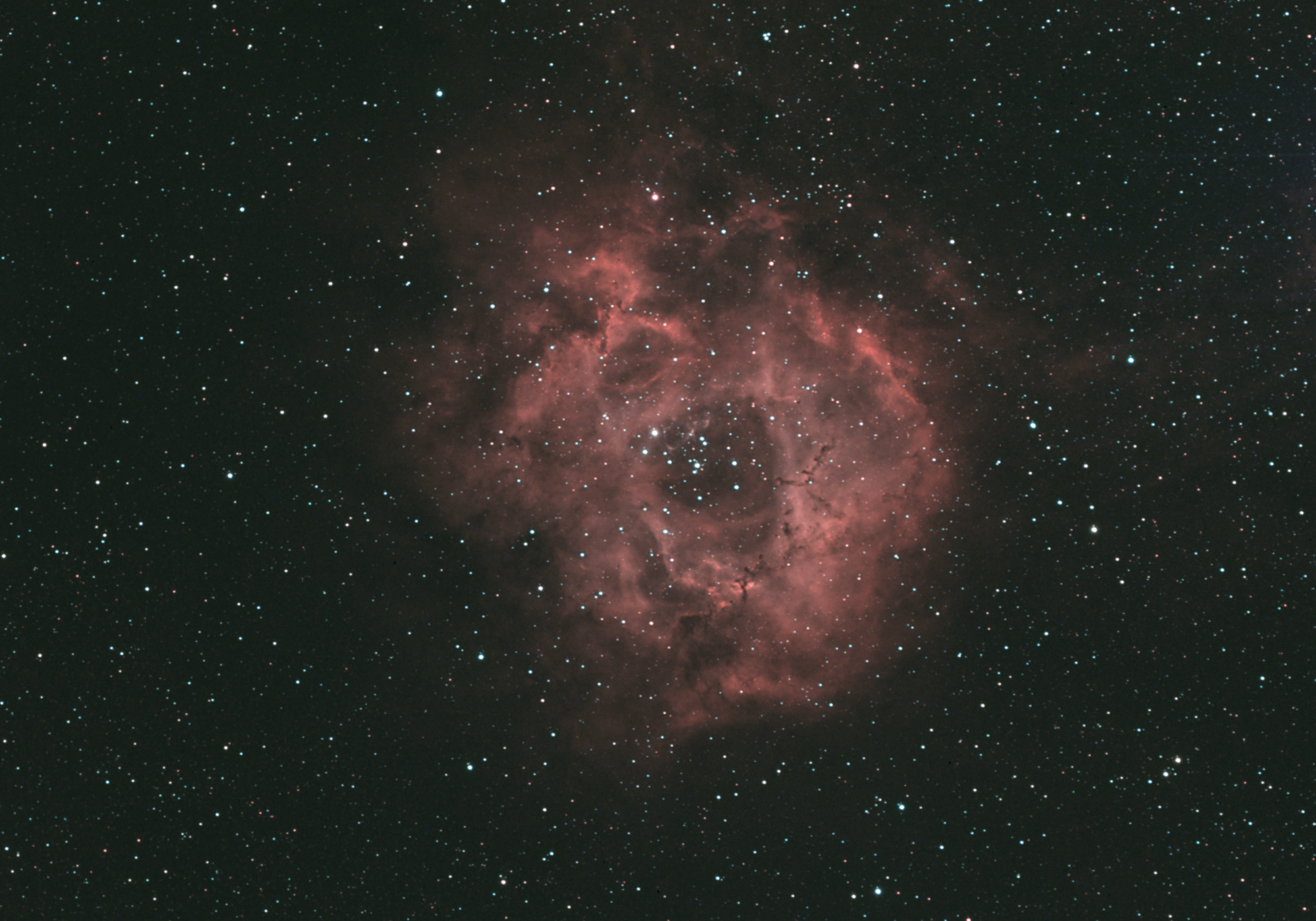About the Rosette Nebula
The Rosette Nebula is a vast, circular nebula located in the Monoceros constellation. It is estimated to be approximately 5000 light-years away from Earth. The nebula is named after its resemblance to a rose, with its central cluster of stars appearing as the flower’s center, and the glowing gas and dust clouds forming the petals. The Rosette Nebula is one of the largest and most active star-forming regions in our Milky Way galaxy.
The central cluster of the Rosette Nebula, known as NGC 2244, is composed of young, massive stars that emit intense ultraviolet radiation. This radiation ionizes the surrounding gas and dust, causing it to emit light in a range of colors, including red, green, and blue. The nebula’s distinctive shape is created by the interaction between the radiation from the central stars and the dense molecular clouds, which are themselves sites of ongoing star formation. The Rosette Nebula is also home to many Bok globules, small, dark clouds of gas and dust that are believed to be the birthplace of stars.
The Rosette Nebula is a popular target for astronomers and astrophotographers alike. Its large size and bright colors make it easily visible through a small telescope, and it can be captured in stunning detail with long exposure photography. The study of the Rosette Nebula provides valuable insight into the process of star formation and the evolution of galaxies. By observing the gas, dust, and stars within the nebula, scientists can better understand the complex interplay between these components and the conditions necessary for the formation of new stars. The Rosette Nebula is therefore an important object for both scientific research and public appreciation of the beauty of the universe.
Photographers Notes
First light with the new Optolong L-eXtreme Pro 2″ filter last night, coupled with my RedCat51 250mm telescope. It was a clear, cool night with low humidity and above average seeing conditions… perfect to play catch up and give this toy a whirl.
Wow. I can’t believe the detail and contrast I got on the 3 objects I captured last night… the Heart, Veil & Rosette Nebulas. The filter does exactly as advertised – tone down the stars and bring up the background hydrogen and oxygen.
This 75 minutes of data (15 x 5 minutes) of the Rosette Nebula in Orion blows away anything I’ve been able to do before. Can’t wait to get the RASA on this sometime this winter.
Capture Details
Imaging Telescopes: William Optics RedCat 51
Imaging Cameras: ZWO ASI1294 MC Pro
Mounts Celestron: Celestron AVX
Accessories: QHY Polemaster
Guiding Telescopes: Orion 50mm Guidescope
Guiding Cameras: Orion StarShoot AutoGuider
Sky Map

